Super User
Fads or Foot Health? Sole Focus Weighs in on What’s Trending
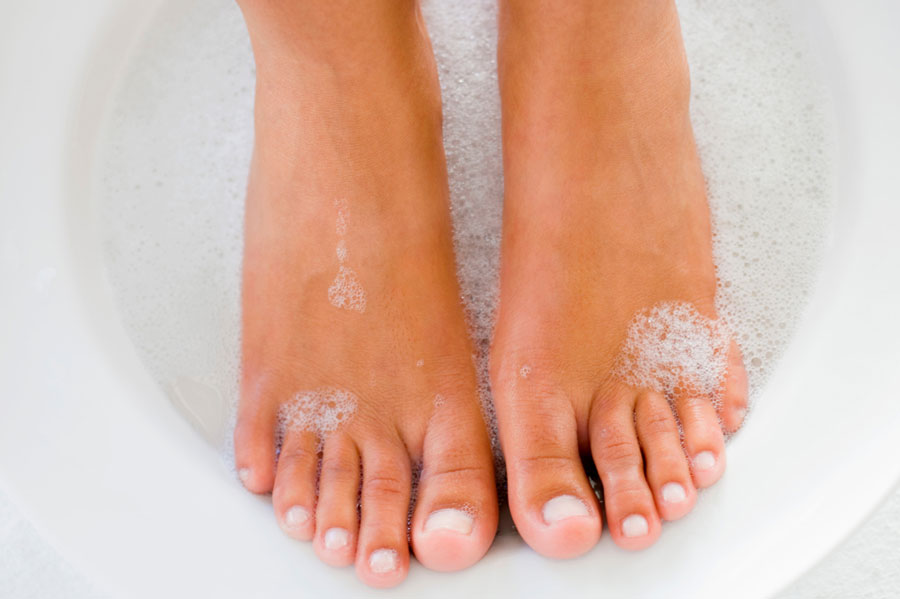
From barefoot running to fancy foot soaks, the world of foot and ankle health is full of trends. But which ones actually benefit your feet, and which ones are just hype, or worse, potentially harmful? Below, Sole Focus Foot and Ankle will examine some popular trends and deliver our verdict.
Trend 1: Toe Spacers
- Effect: Toe spacers are devices, usually made of silicone or gel, that are worn between the toes to increase space, improve alignment, and potentially alleviate pain from conditions like bunions or hammertoes.
- Verdict: Generally Positive. Toe spacers can be a helpful tool for improving toe alignment and flexibility. They can be particularly beneficial for those who spend a lot of time in shoes that crowd the toes. While they won’t reverse conditions like bunions, they can help to slow their progression.
Trend 2: Epsom Salt Foot Soaks
- Effect: Soaking feet in warm water with Epsom salt (magnesium sulfate) is often touted for its ability to soothe sore muscles and reduce inflammation.
- Verdict: Mixed. While Epsom salt soaks can provide temporary relief for sore, tired feet, there’s limited scientific evidence to support many of the claims made about them. Soaking feet for too long can also dry out the skin.
Trend 3: Pedicures
- Effect: Pedicures can improve the appearance of your feet and nails, and some people find them relaxing. However, there are potential risks, such as infections from improperly sterilized tools.
- Verdict: Cautiously Positive. Pedicures can be enjoyable and beneficial if done in a clean, reputable salon that follows strict hygiene protocols. However, individuals with diabetes or compromised immune systems should exercise extra caution and may want to consider a medical pedicure performed by a podiatrist.
Trend 4: Barefoot Running/Minimalist Shoes
- Effect: Barefoot running, or running in minimalist shoes with very thin soles, is claimed to promote a more natural running gait, strengthen foot muscles, and reduce the risk of certain injuries.
- Verdict: Controversial. While some studies suggest benefits, barefoot running or minimalist shoes are not for everyone. They can increase the risk of injury if not transitioned gradually and may not be suitable for individuals with certain foot conditions.
Bottom line: some trends offer genuine benefits, while others are less supported by evidence or may even carry risks. The key is to be informed, listen to your body, and consult with a podiatrist!
Are you seeking treatment for a foot or ankle concern? Schedule an appointment today. The team at Sole Focus Foot and Ankle in Marlton, NJ, would be pleased to assist you.
Say Goodbye to Stubborn Warts with SWIFT Microwave Therapy
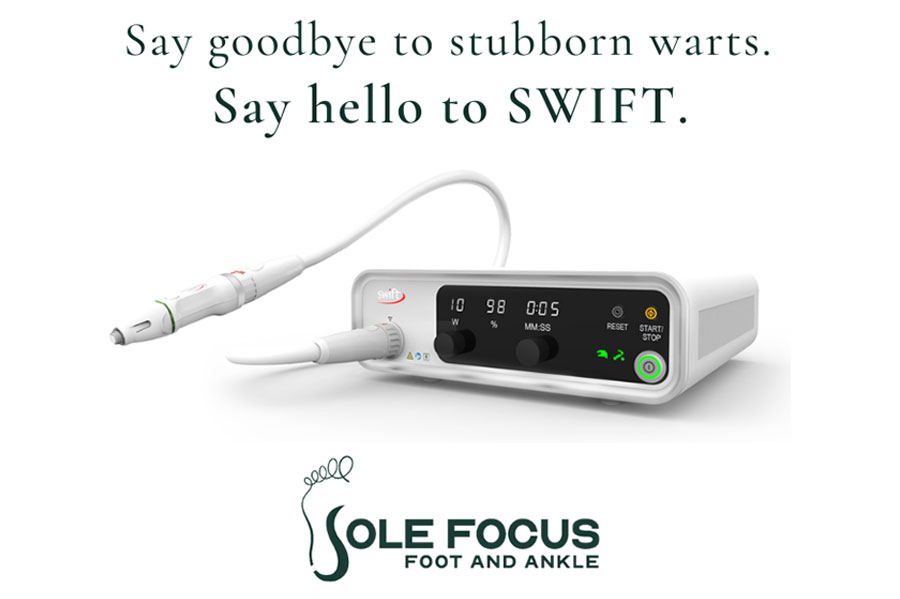
Plantar warts, those painful growths on the soles of your feet, can be incredibly stubborn and frustrating to treat. Traditional methods often provide temporary relief, but the warts tend to return, making every step a challenge. Fortunately, Sole Focus Foot and Ankle offers an innovative option that’s changing the game in the wart treatment space: SWIFT Microwave Therapy.
What is SWIFT Microwave Therapy?
SWIFT is a revolutionary, non-invasive treatment that uses microwave energy to target and eliminate plantar warts. Unlike traditional methods that often require multiple sessions and can be painful, SWIFT offers a quick, comfortable, and highly effective solution.
How Does SWIFT Work?
SWIFT therapy utilizes a specialized probe to deliver controlled microwave energy directly to the wart tissue. This precise application of energy heats and destroys the cells infected with the Human Papillomavirus (HPV), the virus responsible for causing warts.
But SWIFT does more than just destroy the infected cells. It also activates the body’s natural immune response, prompting your own defense system to fight the virus and reduce the likelihood of recurrence.
Advantages of SWIFT
There are a few different ways to handle plantar warts, but unfortunately, many conservative and traditional treatments fall short. FDA-approved SWIFT steps into the treatment gap via:
- Targeted Treatment: SWIFT focuses precisely on the wart, minimizing any impact on the surrounding healthy tissue.
- Minimal Discomfort: Most patients experience only a brief sensation similar to a pinch or a snap of an elastic band.
- No Downtime: No dressings or bandages are required after treatment, allowing you to return to your daily activities immediately.
- Reduced Scarring Risk: SWIFT has a lower risk of scarring compared to more invasive wart removal methods.
- Enhanced Immune Response: By stimulating the body’s natural defenses and triggering a “cascade” of beneficial effects, SWIFT helps reduce the chance of the wart returning, with patient success rates reaching as high as 85%.
Why Choose SWIFT?
If you’re tired of dealing with painful and recurring plantar warts, SWIFT microwave therapy can help. To get access to this safe, effective, and convenient treatment option, just get in touch with the team at Sole Focus!
Looking for treatment for a foot or ankle concern? Schedule an appointment today. The team at Sole Focus Foot and Ankle in Marlton, NJ, would be pleased to assist you.
3 Foot and Ankle Injuries That Connect to Workers’ Compensation
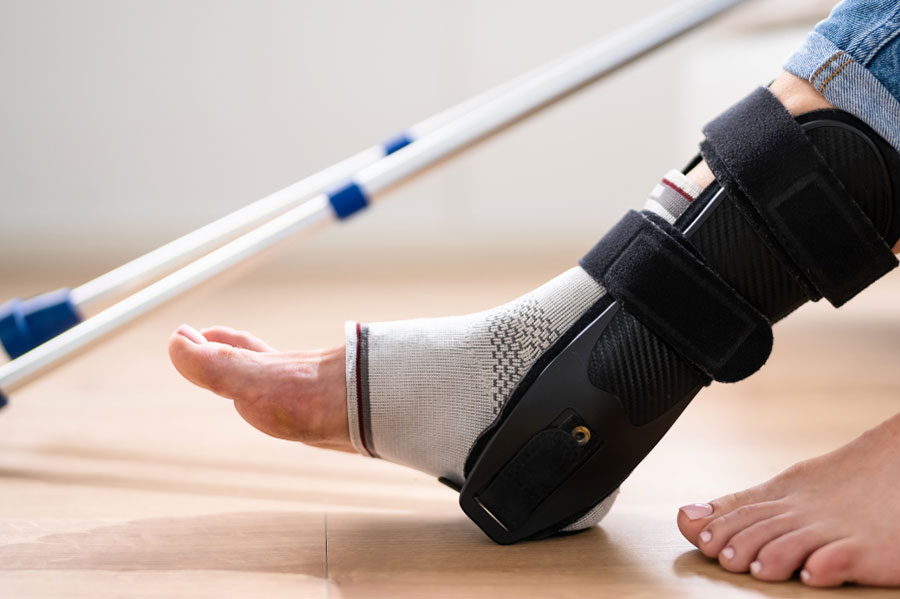
Foot and ankle injuries aren’t just painful. By taking you out of the action and keeping you immobile, some of them can cost you quite a bit of money, too.
Podiatric problems are actually common causes of missed workdays and workers’ compensation claims: in fact, the US Bureau of Labor Statistics claims that from 2021 to 2022, almost 550,000 of more than 2.2 million occupational injuries featured sprains, strains, or tears!
For this blog post, Sole Focus Foot & Ankle is here with information on how these injuries happen and which jobs feature them most!
1. Ankle Sprains:
Ankle sprains occur when the ligaments that support the ankle joint are overstretched or torn.
- This often happens due to sudden twists or turns, falls, or awkward landings.
- Ankle sprains are particularly common in professions that require a lot of standing, walking, or climbing, such as construction, healthcare, and retail.
- Sole Focus offers non-invasive methods for both managing the pain and preventing recurrence.
2. Plantar Fasciitis:
Plantar fasciitis is an inflammation of the plantar fascia, the thick band of tissue that runs along the bottom of your foot from your heel to your toes.
- This condition often causes heel pain that is worse in the morning or after periods of rest.
- Jobs that involve prolonged standing or walking on hard surfaces can increase the risk of plantar fasciitis.
- Consider EPAT shockwave therapy for rapid relief and minimal recovery time!
3. Fractures:
Fractures in the foot or ankle can occur due to various workplace hazards, such as heavy objects dropping on the foot, slips, trips, or falls.
- These injuries can be severe, requiring significant time off work to heal properly.
- Treatment tends to include immobilization or surgery.
A Final Footnote
The most important thing to remember? Listen to your body. If you experience any foot or ankle pain, don’t ignore it. Avoid prolonged standing or walking. Take regular breaks to stretch, rest your feet, and seek medical attention promptly to prevent the problem from worsening!
Looking for treatment for a foot or ankle concern? Schedule an appointment today. The team at Sole Focus Foot and Ankle in Marlton, NJ, would be pleased to assist you.
Tendonitis Troubles? A Podiatrist Can Assist!
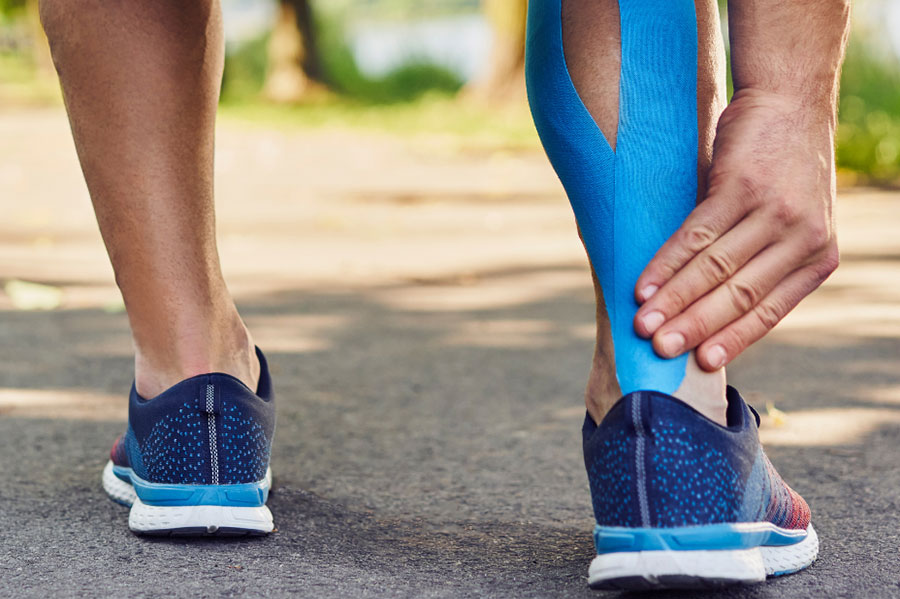
Tendonitis is a common condition, but that doesn’t make it any easier to beat. Affecting people of all ages, it occurs when a tendon becomes inflamed or irritated. These tough bands of tissue connect muscles to bones, playing a vital role in movement and stability. That means that tendon trouble quickly turns into pain in more than one place!
Sole Focus Foot & Ankle is here to clear things up. In the following blog, we’ll dive into the causes of tendonitis and then cover a few different ways we can help you prevent or treat it.
What Is Tendonitis, Exactly…?
Tendonitis can be caused by a variety of factors. The two most common causes stem from either overuse injury or age.
- Overusing a tendon can lead to inflammation and irritation. This is often seen in athletes or people who engage in repetitive activities. A sudden injury, such as a sprain or strain, can also seriously damage a tendon.
- As we age, our tendons can become less elastic and more prone to injury. Certain medical conditions, such as arthritis or diabetes, can increase the risk of tendonitis.
What Are the Symptoms, and How Do I Treat Them?
The symptoms of tendonitis can vary depending on the location of the affected tendon. However, common ones include pain, swelling, tenderness, stiffness, and weakness.
If tendonitis is not treated properly, it can also increase the risk of a tendon tear or rupture. A tendon tear can be a serious injury that may require surgery.
- treatment for tendonitis will depend on the severity of the condition. However, common treatments include rest, ice, compression, elevation, physical therapy, medications, and injections.
- More advanced treatments might include non-invasive options such as EPAT sound wave therapy or Tenex Procedures. For ruptures and tears, patients generally require surgery.
Can I Prevent Tendonitis?
Yes! Warming up before physical activity, stretching regularly, gradually increasing the intensity of your workouts, wearing supportive shoes, and taking breaks from repetitive activities can reduce and relieve your symptoms.
Are you seeking treatment for a foot or ankle concern? Schedule an appointment today. The team at Sole Focus Foot and Ankle in Marlton, NJ, would be pleased to assist you.
Sports Injuries and Prevention

The Top 5 Most Common Foot and Ankle Injuries in Athletes
Foot and ankle injuries are among the most common issues faced by athletes across all sports. Whether you’re a runner, a basketball player, or a soccer enthusiast, the demands placed on your lower extremities can often lead to injury. These injuries not only sideline athletes but can also have long-term effects on performance and overall health if not treated properly. In this blog, we will explore the top five most common foot and ankle injuries in athletes, how they occur, and the best practices for prevention and treatment, supported by authoritative sources.
1. Ankle Sprains
Ankle sprains are perhaps the most common injury among athletes, accounting for a significant portion of sports-related injuries each year. An ankle sprain occurs when the ligaments that support the ankle stretch or tear due to a sudden twist or roll of the ankle. This injury is especially prevalent in sports that involve rapid changes in direction, such as basketball, soccer, and tennis.
According to a comprehensive study published in the Journal of Athletic Training, ankle sprains represent up to 45% of all sports injuries. The study emphasizes the importance of proper conditioning and proprioceptive training in reducing the incidence of these injuries. Additionally, the American Orthopaedic Society for Sports Medicine highlights that recurrent ankle sprains can lead to chronic instability if not adequately rehabilitated.
2. Achilles Tendonitis
Achilles tendonitis is an overuse injury that affects the Achilles tendon, which connects the calf muscles to the heel bone. This condition is common among runners and athletes who participate in sports requiring a lot of jumping, such as basketball and volleyball. Achilles tendonitis is often the result of repetitive stress and inadequate rest, leading to inflammation and pain at the back of the ankle.
A study published in the New England Journal of Medicine reports that Achilles tendon injuries account for up to 10% of all running injuries. The study suggests that eccentric strengthening exercises, combined with adequate rest, are effective in managing Achilles tendonitis. Furthermore, the American Medical Society for Sports Medicine recommends a comprehensive rehabilitation program that includes stretching, strengthening, and gradual return to activity to prevent recurrence.
3. Plantar Fasciitis
Plantar fasciitis is a common cause of heel pain in athletes, particularly those who engage in activities that involve a lot of running or standing. It occurs when the plantar fascia, a thick band of tissue that runs across the bottom of the foot, becomes inflamed. This inflammation can cause sharp, stabbing pain in the heel, especially with the first steps in the morning or after prolonged periods of rest.
Harvard Medical School notes that plantar fasciitis is one of the most common orthopedic complaints, affecting approximately 10% of the population at some point in their lives. The association recommends a multifaceted approach to treatment, including rest, stretching exercises, proper footwear, and the use of orthotic devices. A clinical review published in the British Journal of Sports Medicine emphasizes the role of plantar stretching and calf muscle strengthening in reducing symptoms and preventing recurrence.
4. Stress Fractures
Stress fractures are tiny cracks in the bone that occur due to repetitive force, often from overuse, such as running long distances or jumping repeatedly. These injuries are common in the metatarsal bones of the foot and can cause significant pain and discomfort, especially during weight-bearing activities.
A report published in the Journal of the American Medical Association (JAMA) discusses the prevalence of stress fractures among athletes, particularly those involved in endurance sports like running and gymnastics. The report highlights the importance of adequate bone health, nutrition, and cross-training in preventing stress fractures. Treatment typically involves rest, and in some cases, the use of protective footwear or bracing to allow the bone to heal properly.
5. Turf Toe
Turf toe is a sprain of the ligaments around the big toe joint, typically caused by hyperextension of the toe. This injury is common among athletes who play on artificial turf, hence the name, but it can also occur in sports that involve sudden bursts of speed or direction changes, such as football, soccer, and rugby.
The American Academy of Orthopaedic Surgeons (AAOS) provides a detailed overview of turf toe, noting that it can be a debilitating injury if not managed correctly. The AAOS recommends rest, ice, compression, and elevation (RICE) as the initial treatment, followed by physical therapy to restore range of motion and strength. In severe cases, surgery may be required to repair the damaged ligaments.
Prevention and Treatment Strategies
Preventing foot and ankle injuries involves a combination of proper training, conditioning, and awareness. Here are some general tips:
- Warm-up and Stretching: Always warm up before engaging in any athletic activity and include dynamic stretching to prepare the muscles and ligaments for the demands of the sport.
- Strengthening Exercises: Incorporate exercises that target the muscles around the foot and ankle to improve stability and reduce the risk of injury.
- Proper Footwear: Wear shoes that are appropriate for your sport and foot type. Consider orthotic inserts if you have specific foot mechanics that need correction.
- Rest and Recovery: Listen to your body and allow adequate time for recovery between workouts or competitions. Overtraining is a leading cause of overuse injuries like Achilles tendonitis and stress fractures.
- Seek Professional Help: If you experience persistent pain or discomfort in your foot or ankle, consult with a healthcare professional. Early intervention can prevent minor injuries from becoming chronic issues.
Conclusion
Foot and ankle injuries are a significant concern for athletes across all sports. Understanding the common types of injuries, how they occur, and the best practices for prevention and treatment can help athletes stay healthy and perform at their best. By following the guidelines from reputable medical sources and seeking timely care, athletes can reduce their risk of injury and enjoy their sport for years to come. Visit the team at Sole Focus Foot and Ankle for all your sports injury treatments!
Sidelined by a Sports Injury? A Podiatrist Will Get You Back in the Game

Even the most enthusiastic athletes can find themselves sidelined by overuse injuries! And your feet and ankles, the foundation for all your movement, are particularly vulnerable.
Here at Sole Focus, we take a holistic yet modern approach to treating these issues. In the blog below, we’ll lay out the most common sports injuries we resolve, how we do so, and which options might make sense for your unique needs.
2 Injuries Every Athlete Knows
1. Foot fractures can range from small stress fractures to complete breaks.
- They often occur from repetitive stress, sudden impacts, or improper footwear.
- Pain, swelling, and bruising are common symptoms.
- Depending on the severity, you might experience difficulty walking or putting weight on the foot.
2. Tendonitis is an inflammation of a tendon, the tissue that connects muscles to bone.
- It’s caused by overuse, tight muscles, or poor biomechanics.
- Symptoms include pain, tenderness, and stiffness, especially at the start of activity.
- Runners often experience Achilles tendonitis in the heel, while basketball players might develop peroneal tendonitis on the outside of the ankle.
How a Podiatrist Can Help:
A podiatrist can diagnose your injury through a physical examination and imaging tests like X-rays or ultrasounds.
- For fractures, a podiatrist can recommend casting, a walking boot, or even surgery, depending on the severity.
- Treatment for tendonitis focuses on reducing inflammation and promoting healing. This may involve physical therapy exercises, custom orthotics to improve biomechanics, or ultrasound guided injections.
The Road to Recovery:
Recovery times vary depending on the injury’s severity.
- Fractures can take weeks or months to heal completely, while tendonitis may resolve within a few weeks with proper treatment.
- A podiatrist will guide you through a rehabilitation program tailored to your injury and sport.
At Sole Focus, your program might involve strengthening exercises, stretching routines, or a gradual return to activity. Regardless, you can rest assured that it’s tailored to your feet and your needs!
Are you seeking treatment for a foot or ankle concern? Schedule an appointment today. The team at Sole Focus Foot and Ankle in Marlton, NJ, would be pleased to assist you.
Stay Beach Ready by Tackling Fungal Nail Infections!

With summer comes the opportunity to slip on those sandals and show off your toes at the beach. But what if unsightly fungal nails are hiding beneath the polish? Aside from aesthetic unpleasantness, these persistent infections can cause discomfort and pain, and they have a nasty habit of recurrence to top things off as well.
At Sole Focus Foot and Ankle, we can help you achieve beach-ready feet with effective treatment plans that both manage and address onychomycosis, allowing you to step out in style again without any worries. Keep reading to learn how you can fend off fungus with a podiatrist’s assistance!
Treatment Options
Fungal toenails are stubborn, so they typically require a multi-pronged approach.
- Topical antifungal creams and lacquers are often the first line of defense.
- However, these can be slow-acting and may not fully penetrate the nail plate.
- Oral antifungal medications offer a more systemic approach, but they do come with potential side effects, so consult with your DPM before deciding.
KeryFlex: A Podiatrist-Administered Solution
For a faster and more targeted solution, consider KeryFlex restoration. This innovative treatment involves applying a resin material to the affected toenail.
- KeryFlex acts as a protective barrier, preventing further fungal growth and promoting a healthy nail appearance.
- This makes it an excellent choice for patients seeking a swifter cosmetic improvement, offering immediate coverage for discolored or damaged nails and boosting confidence while the underlying fungal infection is treated with other methods.
- In combination with topical or oral medications, KeryFlex can significantly accelerate the healing process!
Prevention is Key!
While treatment is crucial, stopping future fungal infections is equally important.
To do so:
- Maintain good foot hygiene: Wash and dry your feet thoroughly after showering or swimming.
- Wear breathable footwear: Select sandals or shoes made from natural materials like leather or canvas, and avoid sharing shoes, which can quickly spread fungal infections.
- Change your socks regularly: Especially after sweating or spending time in damp environments!
Early action makes all the difference! If you’re struggling with fungal nails, we can get them clear and healthy again with a combined, holistic approach tailored to your unique needs.
Tough time with your toenails? Schedule an appointment today! The team at Sole Focus Foot and Ankle in Marlton, NJ, would be pleased to assist you.
Stepping Past Heel Pain and Plantar Fasciitis

At Sole Focus Foot and Ankle, we see quite a lot of heel pain stemming from plantar fasciitis. This widespread condition causes inflammation in the plantar fascia – the band of tissue connecting your heel to your toes. And it hurts.
What can we do to help you step past the problem? To start, we’ll break down how to spot it, then follow up with some proven treatment options we might use to get you moving pain free again.
Plantar Fasciitis: Recognizing the Signs
The plantar fascia acts as a shock absorber and supporter for the arch of your foot. When it becomes strained or inflamed, it can lead to sharp, stabbing pain in the heel. Being aware of the symptoms can help you seek treatment sooner and deal with the problem when it’s more manageable, so watch for:
- Sharp or stabbing pain in the heel that worsens upon waking.
- Discomfort after prolonged sitting or standing.
- Pain that eases with activity.
- Heel tenderness.
- Stiffness in the foot, especially in the mornings.
Tailored Treatment for Long-Lasting Relief
At Sole Focus Foot and Ankle, our approach focuses on addressing the root cause of your pain and restoring your mobility. Treatment choices vary, but any of the following might work well:
- Leneva Fat Pad Injectionswork well for conditions featuring underfoot pain or pressure, boasting quick recovery times and long lasting relief.
- Custom-made orthotics provide much-needed arch support, reduce strain, and promote proper foot mechanics.
- Night Splints can produce gentle stretching of the plantar fascia while you sleep, preventing morning pain.
- Extracorporeal shock wave therapy is effective in stimulating healing for chronic cases.
- In rare, severe situations, minimally invasive surgical procedures might be suggested.
Why Choose Sole Focus Foot and Ankle for Plantar Fasciitis Treatment?
Dr. Vrunda Dalal is a noted specialist and leading podiatrist when it comes to heel pain treatment, and she offers highly personalized plans for resolving plantar fasciitis. Everyone likes options, and with our proven expertise in surgical and non-surgical methods, expertise in ESWT, and established pain management experience, we know we’ll find one that works for you.
Are you seeking treatment for a foot or ankle concern? Schedule an appointment today. The team at Sole Focus Foot and Ankle in Marlton, NJ, would be pleased to assist you.
Unlock Your Pickleball Potential with Custom Orthotics!
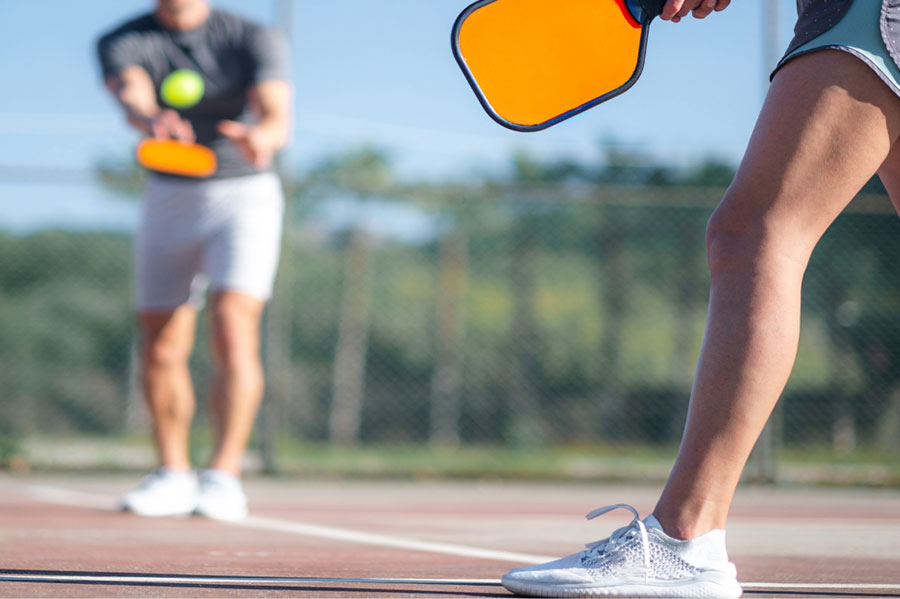
Dr. Vrunda Dalal
Tailor-Made Support: Custom orthotics are crafted to fit your unique foot contours, ensuring optimal alignment and support for precise movements on the pickleball court.
Enhanced Shock Absorption: With advanced cushioning materials, orthotics reduce stress on joints, minimizing injuries like ankle sprains and foot fatigue caused by high-impact play.
Better Balance & Stability: Experience improved stability for quick lateral movements and explosive bursts, giving you the edge over opponents.
Reduced Foot Pain & Fatigue: Stay on your feet longer with relief from discomfort, allowing you to perform distraction-free throughout pickleball matches and training sessions.
Personalized Performance Enhancement: Customized to your biomechanics and foot needs, orthotics optimize footwork mechanics, enabling sharper turns, precise shuffles, and explosive sprints.
Efficient Movement: Boost energy efficiency and endurance with optimized gait cycles, outlasting opponents on the court.
Confidence & Focus: With orthotics providing support, you can focus solely on your game, enhancing mental clarity and performance.
Invest in Your Long-Term Health: Prevent overuse injuries and maximize your playing years with orthotics, ensuring longevity and enjoyment of the sport.
Prevention of Overuse Injuries: By supporting vulnerable areas and minimizing strain, orthotics keep you injury-free and at the top of your game.
Experience the difference custom orthotics can make in your pickleball game! Visit our podiatrist office today for personalized support tailored to your needs.
Step Up your Dance Game: Enhance Performance with our Tips!
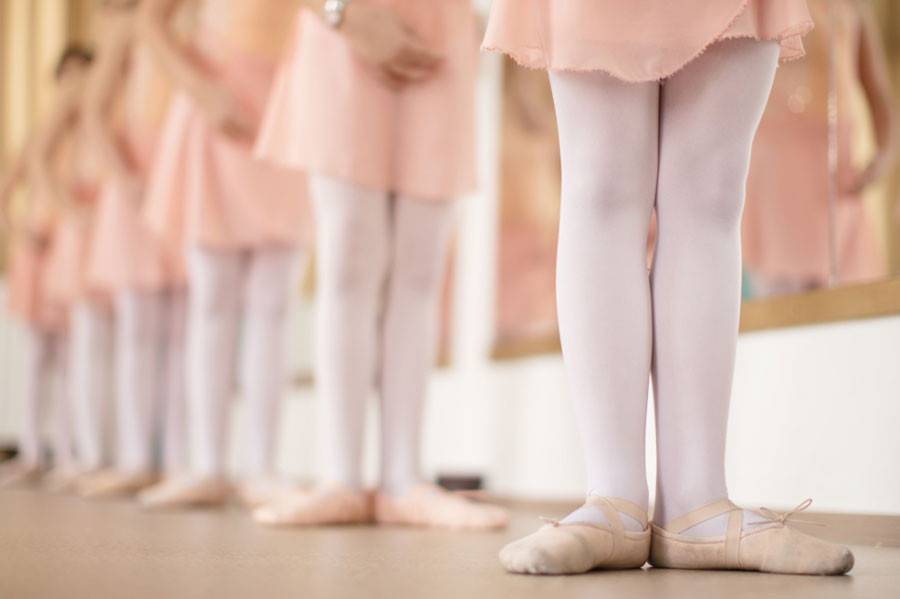
Dr. Vrunda Dalal
Optimized Foot Support for Precise Technique: Tailored support ensures optimal alignment and stability during intricate dance steps, allowing for confident expression and finesse in movements.
Improved Turnout Control: Enhanced support helps maintain control and stability in turnout positions, enabling greater range of motion and elegance in pirouettes and développés.
Increased Jump Height and Extension: Optimized foot mechanics lead to greater power and propulsion in jumps, resulting in soaring leaps and dynamic allegro sequences with ease.
Better Balance and Control in Adagio Movements: Targeted support enhances stability during slow, controlled movements, allowing for graceful execution of lifts and partnering sequences.
Reduced Foot Fatigue in Extended Rehearsals: Advanced cushioning minimizes foot fatigue during rigorous rehearsals, enabling dancers to focus on perfecting their technique without discomfort.
Personalized Support for Foot Shape and Pointe Work: Customized orthotics accommodate individual foot characteristics, enhancing alignment and balance en pointe for optimal performance.
Optimized Energy Transfer for Power and Dynamics: Efficient energy transfer enhances the dynamics of movements, allowing for higher leaps and more intense performances.
Improved Foot Flexibility and Extension: Enhanced support allows for natural foot flexibility, enabling beautiful lines and shapes in choreography.
Enhanced Recovery and Injury Rehabilitation: Targeted support aids in faster recovery from injuries, supporting healing and allowing dancers to return to training sooner.
Visit our podiatrist office to discover how custom orthotics can enhance your dance performance and support your artistic expression!

